How brands are creating marketing momentum around Prime Day—without Amazon
Christmas in July isn’t a new concept.
But Amazon Prime Day, the two-day shopping holiday that offers deep discounts and deals to Prime members, took that concept to a new level.
First celebrated on July 15, 2015 in honor of Amazon’s 20th birthday, Prime Day is now one of the year’s biggest shopping events aside from Black Friday and Cyber Monday—and it’s growing.
In 2021, Amazon Prime Day solicited $11B over both days of the sale in the US, up 6.1% from 2020.
According to a Klaviyo survey, 80% of respondents planned to shop on Prime Day 2022, and despite the turbulent economic climate, 47% claimed they plan to spend more than the previous year.
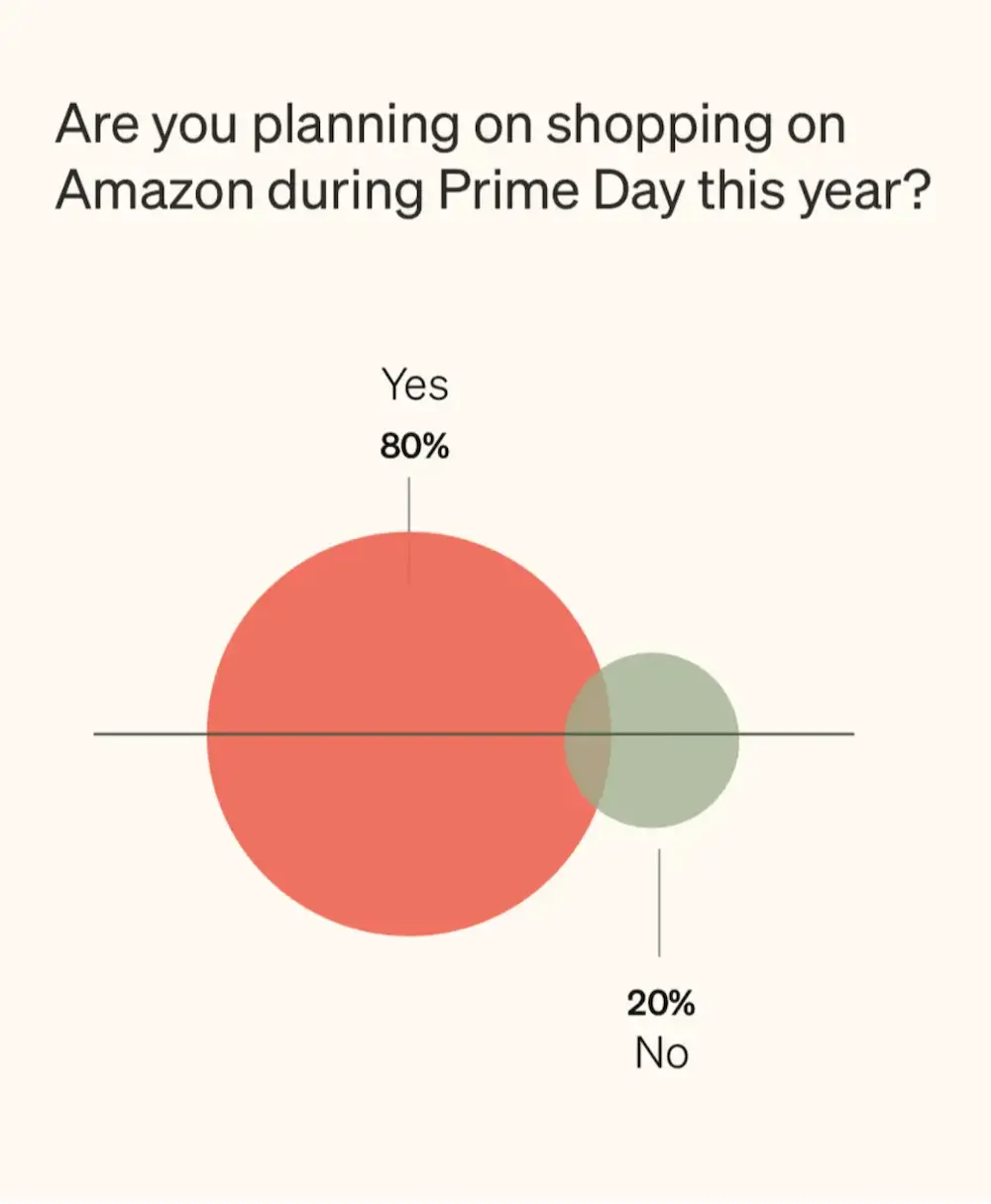
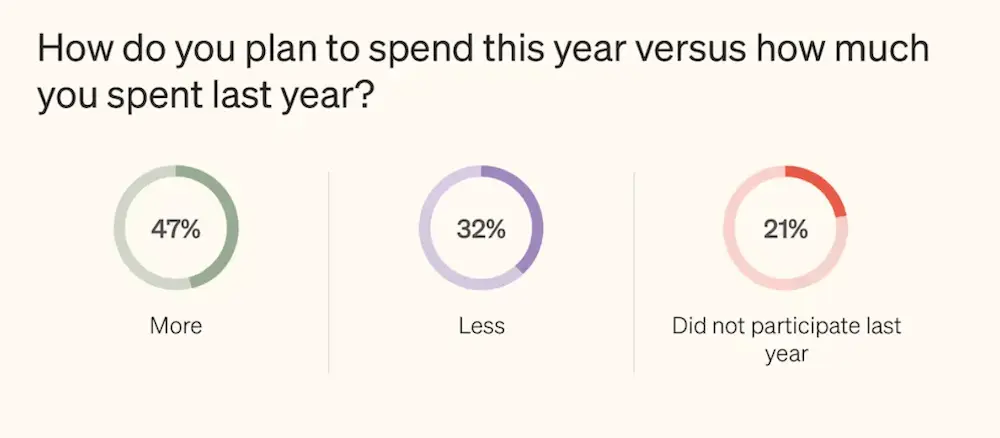
But while Amazon Prime day continues to gain popularity among consumers, the jury is still out on if and how ecommerce brands should participate. After all, not all brands that sell on Amazon qualify for Prime Day visibility, and other brands have opted not to participate at all in selling on Amazon’s marketplace.
But growing sales numbers make this mid-summer shopping event hard to ignore.
What’s the right move when it comes to participating in Amazon Prime Day 2023?
To sell on Amazon or not to sell on Amazon?
That is the question.
With over 200M Prime members and an even larger non-member audience, Amazon can help brands not only increase discoverability of their products through its marketplace, but also benefit from two-day shipping through Fulfillment by Amazon (FBA).
But this access comes at a hefty price in the form of monthly subscription, referral, closing, and order fulfillment fees.
Fees aside, the biggest price brands pay to sell on Amazon is the lack of data and missed opportunities to create long-lasting connections with customers.
Many forward-thinking marketers know they can’t pin their hopes for sustainable growth on Amazon alone. Third-party platforms can change their rules and algorithms with no notice, leaving brands with little control over how, or even if, their products are displayed to potential customers.
That’s why so many merchants are taking ownership of their growth by relying on the channels that are directly within their control—like email, website, and mobile—to deliver highly personalized and compelling customer experiences.
It’s critical that marketers who do decide to sell on Amazon go into it with a channel-specific strategy, while also ensuring they have a strong DTC presence. Just ask the marketers behind the brands that’ve done it.
How 4 brands have adjusted their Amazon strategy
For some brands, Amazon unleashes a whole new world of opportunities. For others, they find the channel isn’t the right fit. And for most marketers, they come to understand that Amazon can be a distribution channel and discovery tool, but that ultimately, DTC is where they want to invest their time and energy.
Find out more about 4 brands’ experiences selling on Amazon, and how the marketers behind these brands are thinking about the platform going forward.
Kiss My Keto finds its voice on its DTC website
Kiss My Keto, a ketogenic lifestyle company, started selling on Amazon to test how customers would respond to their products. But the lack of data they received and their inability to engage customers after a sale helped spur the company’s decision to create their own ecommerce store.
“Selling on Amazon was helpful to reach a wide range of customers, but it doesn’t give sellers the rich data we need to learn more about customers, create relationships with them, increase average order value, customize messaging to different segments, and drive long-term customer lifetime value,” says Kate Geller, director of affiliate marketing at Kiss My Keto.
Selling on Amazon was helpful to reach a wide range of customers, but it doesn’t give sellers the rich data we need.
Without Customer-First Data™, it’s nearly impossible to develop long-term relationships with customers, which are crucial to the growth and sustainability of your business.
“With Amazon, we couldn’t provide our customers with information about ketosis—scientific findings, anecdotal videos, blog content, and other educational resources. Our voice was missing, and we knew we could provide more value to our customers than just transactional ecommerce in a marketplace,” Geller explains.
“We realized we needed to have our own ecommerce store to help us collect customer data and have more control over the customer experience.”
Beardbrand focuses on building their brand off Amazon
Beardbrand, a men’s grooming company, initially used a third party to sell their products on Amazon. It worked well, and the brand thought about bringing that function in-house so they could invest more into selling on Amazon. But when their products sold out on Amazon, Beardbrand noticed an unanticipated surge of sales on their ecommerce site.
“Why bother managing two different channels when we could just focus on one and make it really good?” Eric Bandholz, founder of Beardbrand, says of their decision to change their sales channel strategy.
Why bother managing two different channels when we could just focus on one and make it really good?
After realizing that Beardbrand didn’t have to rely on Amazon for sales, Bandholz ultimately decided to take the brand off the platform completely, and hasn’t looked back since.
“We exited Amazon in January of 2018, and it’s been great. I go to bed with no worries that someone’s going to shut down our listings or that we’ll have to deal with fake reviews—all the things that Amazon sellers are familiar with,” says Bandholz.
“That being said, I don’t think it’s the right move for everyone. If you have most of your business coming in through Amazon, you can’t kill it. But because we invested so much in content marketing and brand, we were able to do that.”
Mt. Capra learns the dangers of relying on third-parties
Mt. Capra, a family-owned maker of premium goat milk products, has been in business since the late 1920s. The brand sells its products on its DTC website and Amazon, but has found the latter to be challenging.
“We had our sales almost cut in half over the course of about a month simply because Amazon misunderstood three of our top listings. They said we were advertising it in a way that was against their terms of service, but it wasn’t. It took a month and a half to get them to turn it back on, and by then, the sales never recovered,” says Joe Stout, president of Mt. Capra.
“What that showed us is that you have to build your own customer list. You have to own the relationship with your customers,” Stout adds.
What that showed us is that you have to build your own customer list. You have to own the relationship with your customers.
Since then, the team at Mt. Capra has focused on building their customer list, segmenting it effectively, and creating personalized marketing experiences to drive their growth.
Woo More Play proceeds on Amazon with caution
When Woo More Play, a sexual wellness brand, realized Amazon presents limitations for brands selling “taboo” items, they were forced to market their products as something else entirely in order to meet merchant guidelines.
While the Woo More Play team still sells through Amazon, founder and creative director Westin Mitchell emphasizes that it’s important for brands not to rely on the mega marketplace for all of their sales and marketing.
“It’s a long-term strategy—you don’t want to have all your eggs in one basket, especially with a platform like Amazon, which doesn’t share its customer data,” Mitchell explains.
It’s a long-term strategy—you don’t want to have all your eggs in one basket, especially with a platform like Amazon, which doesn’t share its customer data.
“If you’re dependent on selling through a third-party platform like Amazon, you don’t know who your customer is. When you sell DTC, you’re able to dive into a lot more intricate data and analytics and see really who your audience is, who your customer is, and reach out and solve problems to make their lives better,” he adds.
But whether or not you choose to sell on Amazon, you can still take advantage of the Prime Day shopping extravaganza.
Consumers’ wallets are already out, so why not try to sway their purchase power in your direction?
HONEST gives subscribers extra time
On July 14, just 1 day after Amazon Prime Day, The Honest Company sent out an email offering 20% off if you order from their site.
It’s a smart move—not only is the timeline of their sale longer than Amazon’s, it’s a big discount. So, if their subscribers would normally take advantage of Prime Day in order to get some of their favorite products from Honest, now they’ve created a win-win: folks can shop directly from the brand’s site, they get more time, and the brand gets to collect data they wouldn’t otherwise on Amazon—not to mention, keep more of the profit from the sale.
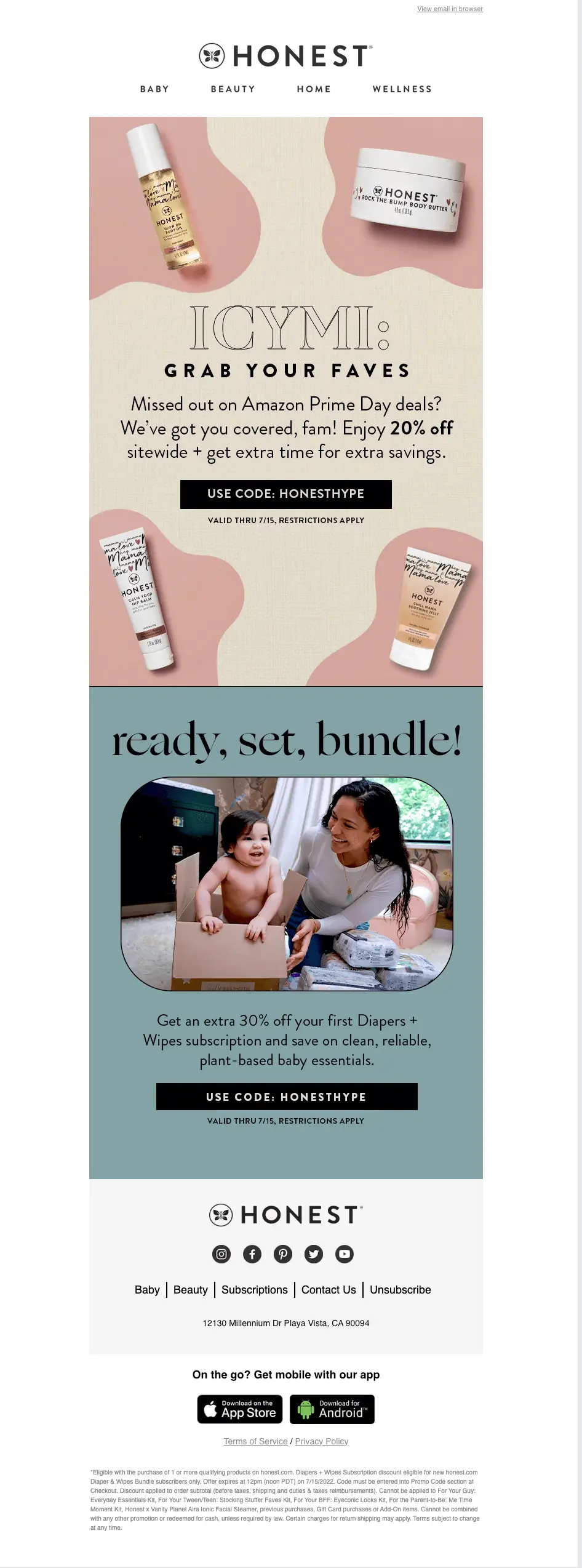
How 3 brands create momentum around Prime Day—without Amazon
As marketers increasingly realize the power of their own digital channels, they’re swooping into the mid-year shopping season with steals and deals of their own.
And according to Klaviyo’s survey, shoppers expected brands to hold sales on Prime Day 2022—even if they aren’t on Amazon. In fact, more than 76% of respondents said they expected non-Amazon ecommerce stores to offer their own sales during Amazon Prime Day.
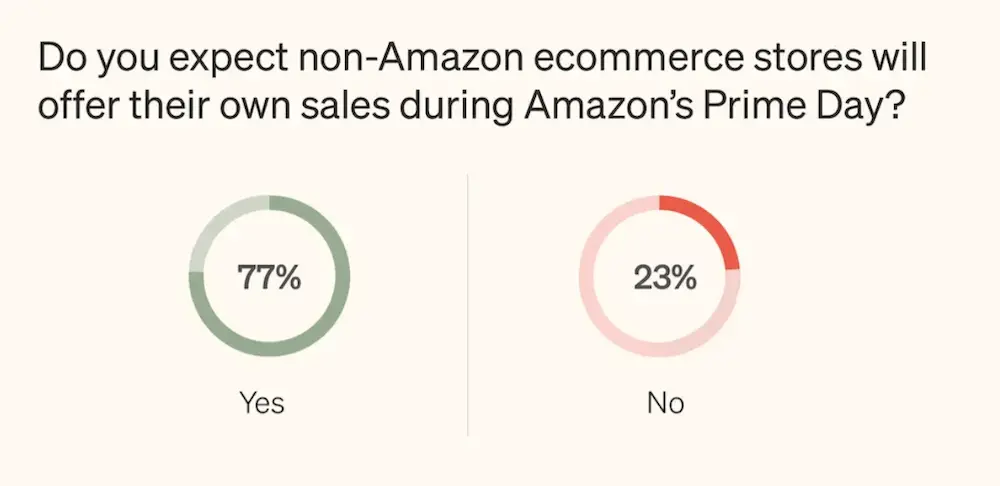
Sales-event-Amazon-ads-amazon-dsp-amazon-marketing
Survey respondents also claimed that they’d be looking at stores in certain categories for deals—mainly electronics (29%), apparel and accessories (21%), and hardware and home improvement (14%).
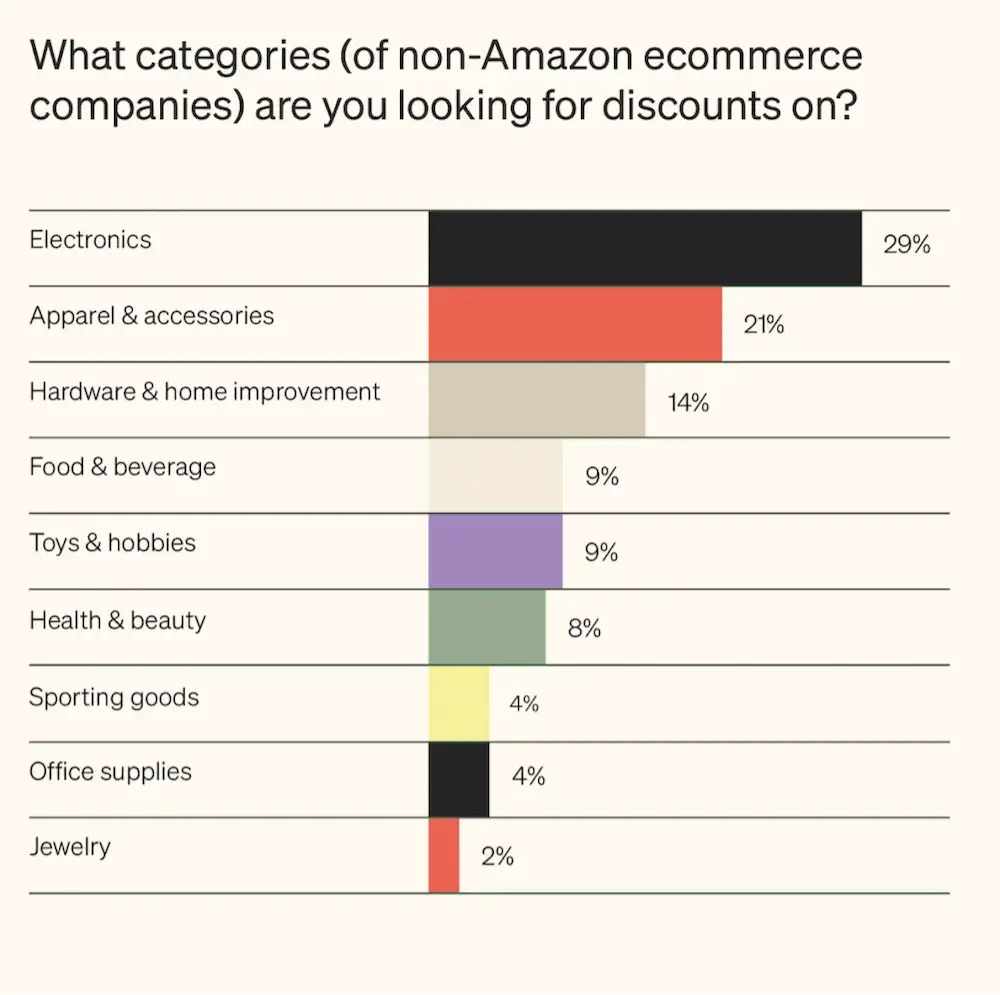
“Consumers have also shown an affinity to cut out the middleman and buy directly from brands themselves,” wrote Zach Thomann, executive vice president and general manager for PFS, in an article for DigitalCommerce360. “39% would prefer to shop directly on a brand’s website rather than a marketplace website. Thus, DTC brands must be ready to cultivate a seamless experience for shoppers straight from their site, from check-out to last-mile delivery.”
Want to take advantage of Amazon Prime Day, without selling on Amazon? Here are a few real-life examples you can use for inspiration.
Chubbies hosts their own online event
Chubbies, a men’s apparel brand known for its shorts, created two branded holidays to drive sales—one in July and the other during the holiday season.
Chubbies’ “Julyber Monday” event was originally designed to help men get new shorts ahead of Independence Day. Its “Thighber Monday” holiday, meanwhile, coincides with Cyber Monday.
The events have been so popular that Chubbies introduced “ChubFest 2020”: two weeks of “insane deals” that would include “Julyber Monday.” The two-week event featured deep deals, new products, limited inventory, and free gifts.
This year, Chubbies is back with their Julyber event—this time going even bigger by promoting three weeks of deals.
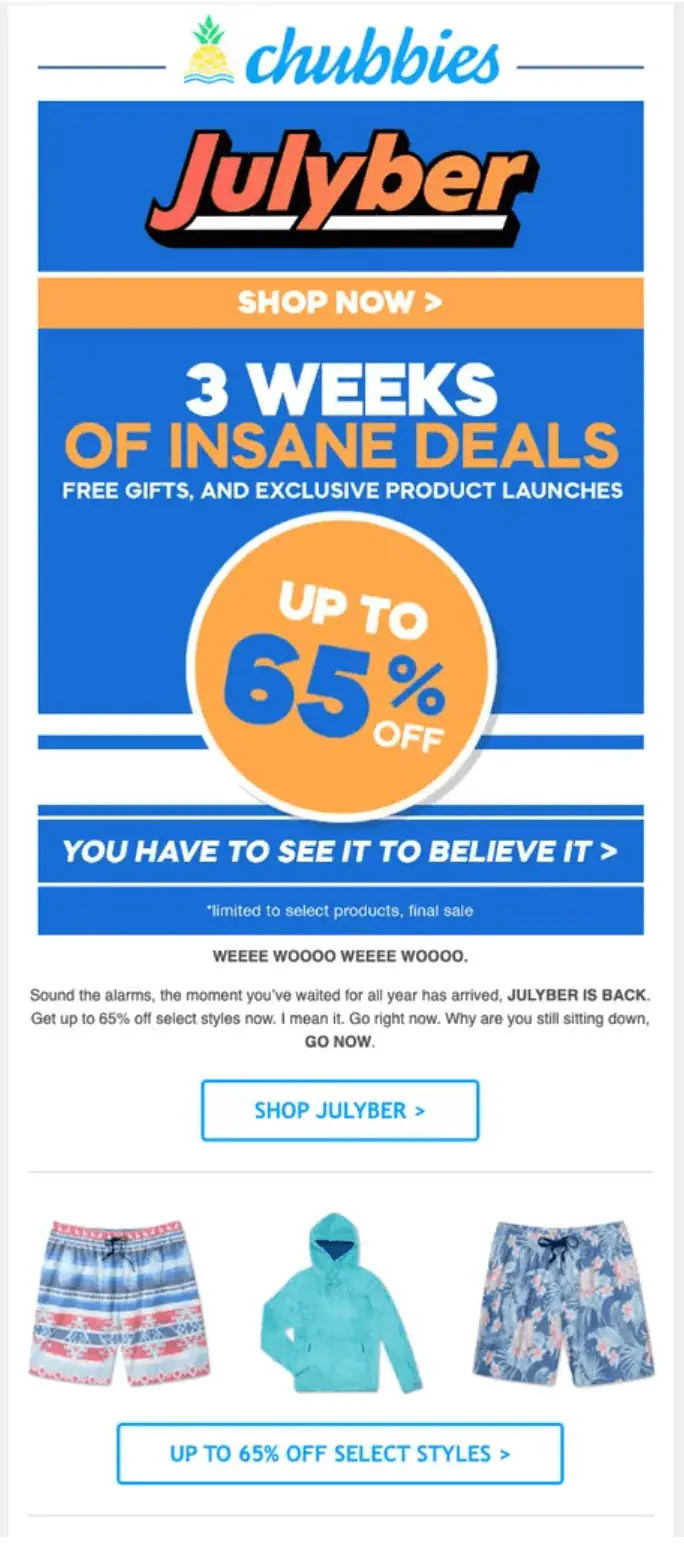
For marketers that don’t want to hop on Amazon’s bandwagon, Chubbies offers a unique way to still make the most of the summer sale’s season.
CROSSNET capitalizes on Prime keywords
When people are scanning their emails for Prime Day deals, the CROSSNET team knows shoppers are typically looking for the word “Prime.” So they strategically incorporate it into their subject line: “You know, you are a PRIME customer.”
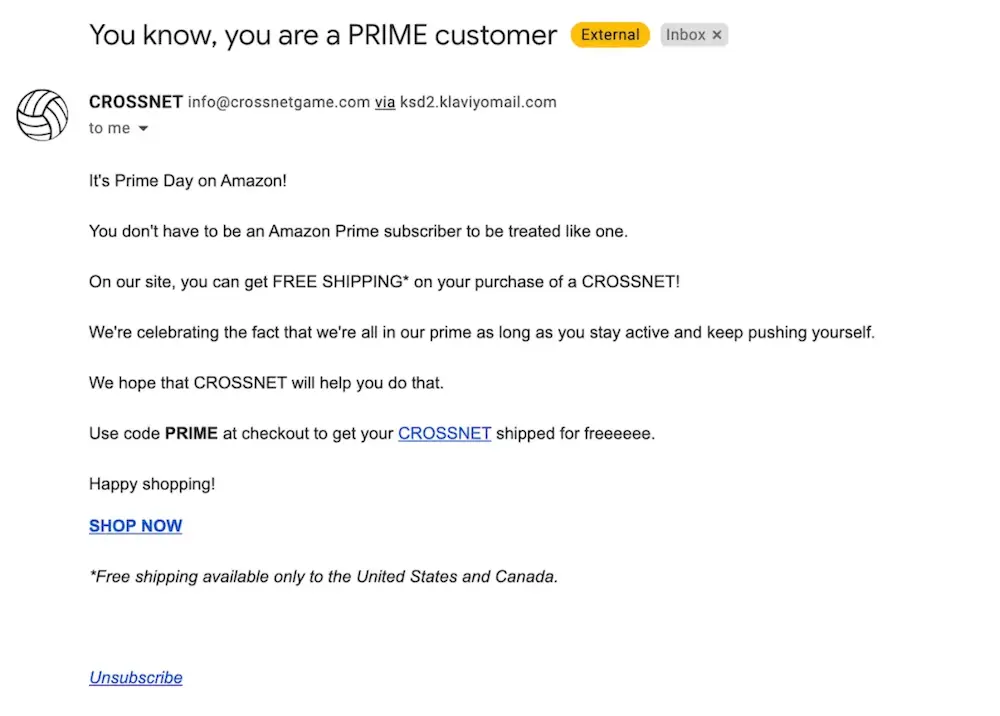
The brand then takes the opportunity to present a free shipping offer to all their subscribers—regardless of whether they’re Amazon Prime Members or not. The discount code is “PRIME,” an homage to the ecommerce holiday.
And the cherry on top? Customers are shopping on their DTC website, so CROSSNET isn’t giving up a percentage of sales to Amazon.
With this email campaign, CROSSNET presents a simple way to make the most of Prime Day—without directing shoppers to Amazon to purchase.
TONIC encourages consumers to shop small
Last year, CBD brand TONIC sent out this cheeky email, which gives a nod to Jeff Bezos and Prime Day while encouraging readers to celebrate “Vibe Day” instead.
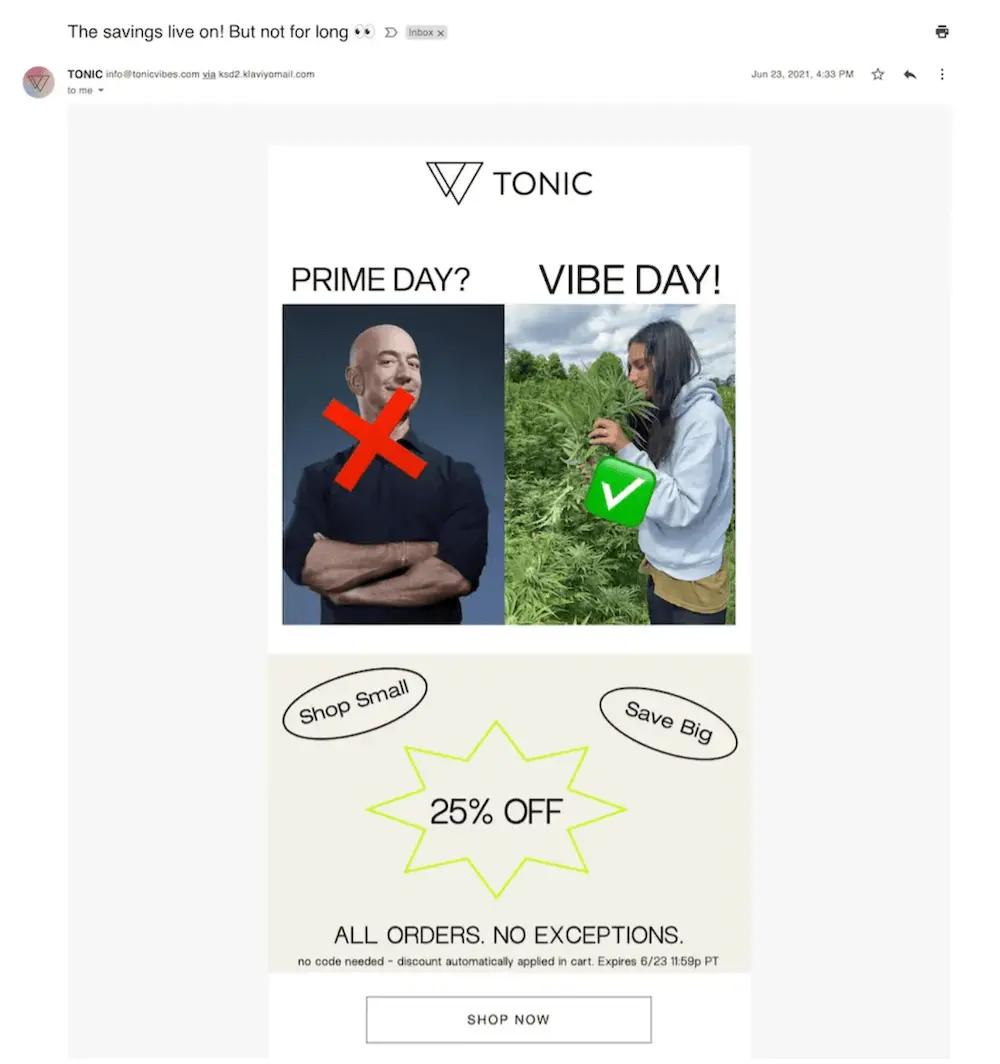
TONIC interpreted Prime Day as an opportunity to encourage consumers to shop small—and save big—by buying from small businesses instead of billionaires.
Giving your customers a reason to be loyal to your brand is so important if you’re a small business because the cost to keep a customer is going to be a lot less than the cost to gain a new one
Other small businesses can take a similar approach around Prime Day. Tap into consumers’ desire to shop small, and create an offer they won’t be able to refuse on your DTC website.
What Bezos doesn’t know won’t hurt him.
Brands must use their own channels to grow sustainably.
Selling on Amazon can help brands gain access to new customers. But if they want to grow sustainably, brands today have to go deeper than simply acquiring customers through transactional marketplaces.
Collecting Customer-First Data—and using it to develop time-tested connections with customers—is what will help you stand out from the competition and compete for a share of shoppers’ wallets, during Amazon Prime Day and beyond.
Looking for more advice on how to reduce reliance on third-party platforms? Get the guide to owned growth.

